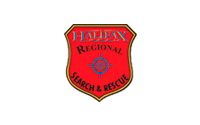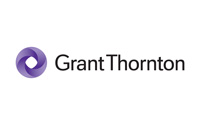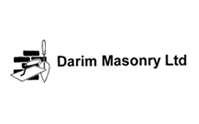Team Stories – Jellybean
April 19, 2002
Jellybean (S.McKenzie, J.Garden, M.Lechmann, R.MacDonald)
3100 points
7/10 teams in Rec-24
Prolog
Who’s Bright Idea Was This?
It seemed like a good idea at the time. 24 hours in the woods in April in Nova Scotia. What a great way to test the DNA – find its strengths and weaknesses – see first hand how our customers will use it – experience the frustration of a poor user interface. What more could we ask for?
Then, the horror stories. Snowstorms. Waist deep water. Hungry bears. Roving bands of coyotes. Flesh-eating black flies. As the date drew nearer, those little nagging doubts became more persistent. What had we gotten ourselves into?
Even after three trips to the gym and one strenuous early-morning hike that lasted well over 40 minutes, I couldn’t honestly say I was in peak physical condition. I would just have to rely on whatever fitness base I had built up during our numerous hill climbs up to Maxwell’s for 88-cent burgers.
Not even Team Jellybean’s frequent trips to Mountain Equipment Co-op, enjoyable though they were, were enough to completely dispel the fear that maybe we had gotten in over our heads. It wasn’t too late to fabricate some kind of family emergency and regretfully bow out. But no, having made the commitment (several hundred dollars worth of commitment!), I couldn’t back down now.
Chapter I,
Houston, We Have a Problem
The morning of April 27 dawned cool and clear. The snow (!) that had fallen earlier in the week was gone, and conditions were perfect. As expected, I was the last member of Team JellyBean to arrive. Michel had been there for hours, entering data for the 8-hour teams. As we were soon to discover, he might as well have slept in. Rick was busy making arrangements for Sunday morning coffee delivery, while Simone was outside putting a couple of bricks in her pack, “just to balance the load.”
After registration and mandatory equipment check, all three Navitrak teams posed for group photos. The jokes about the papers using the pictures for their Tragic GPS Accident articles were well received but had, I thought, a bit of a “whistling past the graveyard” feel to them. Finally, after a brief address by Michael Haynes, the whistle sounded and we were off.
About 100 metres off, I would guess. At least, that’s what the DNA told us as we passed the spot where all the other teams were ducking into the woods for no apparent reason. It turns out, you see, that the DNA, much like all these other new-fangled computer-type gadgets, is only as good as the data you give it. And the marker data entered that morning had been subject to numerous sources of error. Human error, that is (no names, just initials – Michel Lechmann).
It quickly became apparent that we would have to verify the accuracy of every marker entered. After slipping into the woods and claiming our first checkpoint (#190), we decided the best approach would be to correct the markers one at a time as we navigated to them. This was fine with me because it had been my intention all along to enter the navigation data in the field as opposed to the mission pre-planning approach using the desktop software.
Our next discovery was that having accurately placed markers was only half the battle. In order to navigate to a marker on the DNA, it must be selected. Selecting a particular marker from a list of 40 turned out to be an exercise in futility, and it wasn’t long before I had banished the entire list of markers from my display, never to be seen again.
Chapter II
If it Was a Dog, It Would Have Bit You
The route we selected took us to the north, keeping us on the marked trails for the next three checkpoints. We figured it might be a good idea to hit some easy ones first, until we got the hang of it. Despite this strategy we managed to walk right by the road leading to the next checkpoint. After backtracking and eventually locating #198, we realized that we needed to pay a little more attention to the precise location of the checkpoints on the map.
Checkpoint #186 was straightforward, right beside a little bridge, and by now we were getting pretty confident. At the very next checkpoint (#187) however, Team JellyBean spent 20 minutes or more looking everywhere but the spot indicated on the map.
Thus, of the first four checkpoints attempted, we had walked right past three of them. This despite the fact that the markings on the map were perfectly accurate, and the DNA was performing well, showing us exactly where we were on the map at all times. Obviously, we weren’t paying close enough attention to the information available to us. We vowed to henceforth be more careful in this regard and headed off in search of our next target
Chapter III
A Momentous Occasion
It was here that we made the decision that would ultimately lead to a milestone moment in the development of the DNA. Checkpoint #243 was positioned on the northern tip of a small lake, nearly a kilometre from the nearest marked trail. This would be our first departure from the comfort of the roads and trails we had enjoyed until now. On the map we chose a likely point to enter the bush, and headed down the trail towards it.
Very quickly, however, we came upon a road that did not appear to be marked on the map. It had shortcut written all over it, so, after a brief conference, we abandoned our original course and headed up this mystery road. As expected, the road petered out fairly quickly, and we were forced to finally head into the woods for or first taste of bushwhacking. It was at this point that we fell into the navigational mode that would serve us well for the rest of the day.
Throwing caution to the wind, we entrusted ourselves to the DNA, depending on it exclusively to get us to our destination. Using the Compass Tool to take our bearings, we headed directly for the southern tip of the lake, periodically stopping to check our course and correct as necessary.
We emerged abruptly from the bush just a few metres from the tip of the lake. So far, so good. Rather than follow the edge of the water, which took a sharp dogleg left, we decided to again head straight through the bush to our target. We moved on through some trees and into an area of dense bushes just high enough to obscure our vision in all directions. Consulted frequently, the DNA informed us that we were indeed holding a steady course toward the checkpoint, but with less than 100 metres to go, we still saw no sign of it.
Then, disaster struck. The team member carrying the map (no names, just initials – Rick MacDonald) announces that he has lost it! After a moment of panic, we realize that all we have to do is retrace our footsteps, all faithfully recorded on the DNA, and we will find it. All we would lose is time. Luckily, however, the map is found just 20 or 30 metres back on the trail, and all was well.
Pushing ahead once again, the brush seems to get thicker even as the DNA insists that we are almost there. Finally, just when I am starting to wonder what bug might be causing this obviously false information to appear, we burst out into a clearing, and there, directly in front of us a dozen metres away, is checkpoint #243!
Team JellyBean is in a celebratory mood. Four novices, bushwhacking through thick cover for more than kilometre, have been guided to within metres of their target by a heretofore-untested device of their own design. Pictures are taken. Congratulations and high-fives are exchanged, and the weekend is declared (perhaps a trifle prematurely) a resounding success.
Chapter IV
So That’s What Those Lines Mean
From this point on, we decided to use the route editor to create simple routes to our target checkpoints. By referring to the map provided, we were able to eyeball the location of a checkpoint and plot a route to it. This simplified the waypoint selection process and kept the screen free of clutter, since a new route could be created as often as necessary. Having adopted this new approach, we immediately set off in search of our next checkpoint.
Rather than retrace our path, we chose a more direct route out, one which took us through some of the thickest growth we wood see. Despite the heavy cover, the DNA maintained a fix throughout, guiding us back to the trail after an hour of very tough going. From that point, it was a routine hike on a wet trail to #236. Our next checkpoint looked like a tough one, so we decided to take a few moments to ingest some much needed caffeine, and then hit the trail again.
A kilometre later we left the trail once again. Our straight-line route took us directly over a fairly steep hill that, in the dense tree cover, was a rather strenuous climb. For the first time the contour lines on the map took on a real meaning for us, as it would have been easy to avoid the hill with just a slight detour. Descending the other side, we emerged from the bush just a few metres from checkpoint #233. Once again, the DNA had brought us to our target.
From there we continued bushwhacking, eventually reaching high ground on a ridge that had been cleared of trees. A logging road took us first to an easy checkpoint at #232, and then back towards the camp. On the way, hungry though we were, we decided to detour to checkpoint #183.
Drawing on our new-found navigational expertise, we noted the contour lines indicating a steep incline between the road and the checkpoint. To avoid it, we left the road farther back, cached our packs, and found #183 in what had become routine fashion. We then backtracked, following our trail on the DNA to get back to our packs and head for the camp.
Chapter V
Curses – Foiled Again
The fire at the camp was a welcome sight. While Michel and Simone got us settled, Rick and I went to find checkpoint #185, located somewhere nearby. After a bit of wandering, we found it as darkness fell. With our flashlights back at the fire, we were unable to see where to punch the card. Now, there had been requests for a brightness control on the DNA to reduce light levels for night viewing, but I had personally deemed such a feature unnecessary. However, after using it as a flashlight to punch in #185, I had to concede that it was maybe a tad hard on the eyes after dark.
Back at the fire, Michel and Simone were cooking up a storm. First up was Turkey Teriyaki. Prepared and eaten in its own foil pouch, this scrumptious meal was so filling that Michel couldn’t even eat it all. Then there was the Turkey and Rice. Not quite as tasty, but, according to Simone, it made an excellent hand warmer. I decided to save my Turkey Dinner for another time.
After eating and warming up by the fire, we decided to get some shut-eye. By now the temperature had dropped considerably, but we were prepared. Thanks to Rick’s foresight, we were all equipped with high-tech foil blankets made, I believe, from the same material as NASA’s spacesuits. These blankets worked by reflecting body heat to keep you warm. This approach assumes, of course, that there is body heat to reflect. Since this was not the case, we were forced to don every article of clothing in our packs and try to sleep on the frigid ground under noisy pieces of tin-foil.
Three hours later, having forever sworn off any and all foil-based outdoor products, we hit the trail once again, using the light of the full moon to help avoid any nasty falls on the now frozen puddles which dotted the road.
Chapter VI
A Shot in the Dark
The next checkpoint was a good one. Located at the top of a steep hill, the trail leading to it turned out to be a beautiful stream bubbling over a rocky bed. Luckily we got in and out before it was completely frozen.
Actually finding #199 in the dark was a daunting task, one which we would never have accomplished without the DNA. It took us only minutes, however, unlike the group we had met coming in, who had abandoned their search as hopeless.
Our next target, #181, should have been easy. It looked to be located right on the main road, we had a hint from Team Hemlock Looper regarding its exact location, and we still missed it. Twice. When we finally did find it, our joy was tempered by the subsequent discovery that the punch card was no longer in our possession. The team member who lost it (no names, just initials – John Garden) started backtracking, and Rick volunteered to help.
Eventually we found it, breathed a sigh of relief, and took solace in the fact that our desperate pre-dawn search would no doubt result in an entertaining trail being recorded on the DNA.
Chapter VII
The Path of Least Resistance (?)
At this point, we stopped to evaluate our position. Our ill-advised attempt at sleep had left us stiff, chilled, and anything but rested. One team member reported a flare up of an old war wound which made walking difficult (no names, just initials – Simone Mackenzie). As the sun came up we decided on a route back to base which looked to be relatively easy. The tradeoff would be fewer checkpoints along the way, but nobody seemed too bothered, so off we went.
Four kilometres later we reached our “easy” route home – a power line we would be following for a further three kilometres. Now, I’m not sure what that is in nautical miles, but that would certainly have been a more appropriate unit of measurement, because we spent the next two hours refuting manufacturers’ claims regarding the water repellent properties of our footwear. And checkpoint #229, the only one we got after all that, was worth a measly 200 points. It was, in Seinfeld-ian terms “tantamount to a slap in the face.”
Reaching shore, we were faced with a short hike to an easy (100 pt) checkpoint which we later discovered was a trick. According to organizers, it was worthy of at least 300 or 400 points. We took a rest after that one, snacked on some energy bars that Rick handed out in an effort to atone for the foil blanket fiasco (they were actually quite tasty), and hit the trail once again. Checkpoint #191 was located on an actual trail which would lead us back to base. With a final burst of energy, we put on a push in hopes of getting an early finish bonus. We arrived at the bus just after 11:00am, checked in, and immediately headed for the event centre.
Epilog
Il Buono, Il Brutto, Il Cattivo
The Good
The event itself was fantastic. Well organized and lots of fun. The food on Sunday was an unexpected bonus. We’ll definitely be back next year.
The DNA performed beyond our expectations. Map positioning was consistently bang-on, the compass worked very well (!), and we were repeatedly amazed by how easily we navigated to some very difficult flags.
The Bad
Stopping for sleep was a big mistake. Ill-equipped as we were for the cold temperatures, we would have been much better off to have taken a supper break and kept on right through the night.
The whole Markers interface on the DNA needs to be rethought. They simply don’t work. Luckily it offers other ways to navigate from point A to point B.
The Ugly
Our experience in the swamp, as unpleasant as it was, could have been much worse. It made us realize how poorly we had prepared for wet conditions. Had it rained during the event, we probably would have had to pack it in early.
Battery life in the DNA was laughable. I had brought along what I thought was about a week’s supply of Duracells, but, by nightfall I had begun to worry about running out. On the plus side, the dead ones came out of the unit warm enough to keep my hands toasty throughout the night.
Footnote
We are disappointed to note that Navitrak International Corporation is no longer producing the Digital Navigation Assistant (DNA) and that the members of Team JellyBean are no longer associated with the company. However the team will be back in 2003 with new technology to test out! Stay tuned…
Posted in: 2002, Team Stories | No Comments »
































Recent Comments